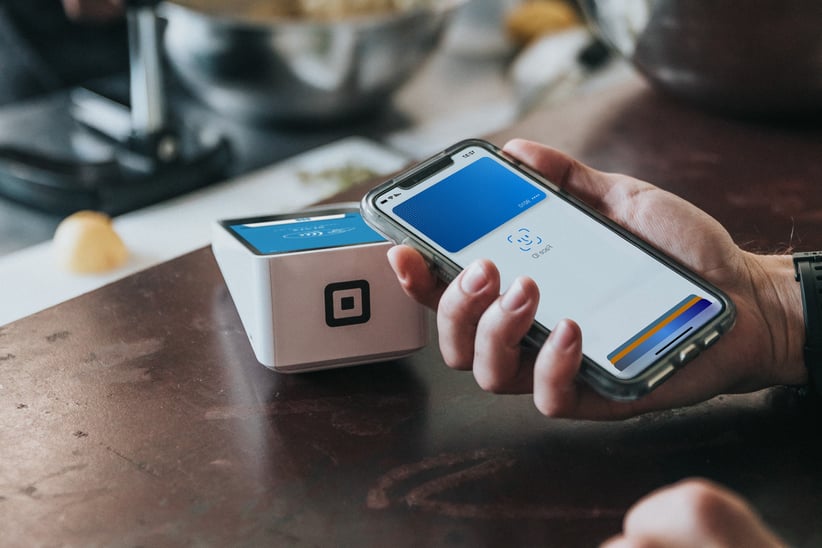Just a few years ago, one-click payments were a hit in the eCommerce sector, which was desperately seeking a way to make purchases as easy as possible. Nowadays, in some regions, even clicks seem to be old-fashioned.
According to the McKinsey report, both consumers and retailers are increasingly embracing mobile payments such as app-based or in-app payments. No wonder, since mobile apps accounted for more than 30 percent of total digital commerce volume in 2017, and the analytics predict that the trend will grow across all regions.
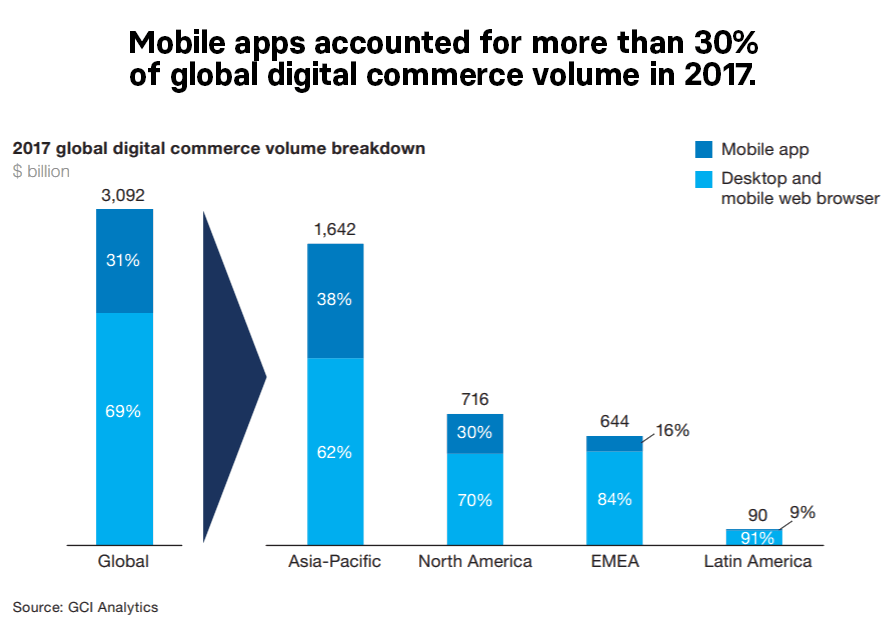
In China, for the best example, life without Alipay or WeChat Pay—the most popular mobile payment apps—can already be very challenging. Chinese merchants or taxi drivers often refuse cash as mobile payments are so common. Yet, since Alipay and WeChat Pay required a Chinese bank account and phone number to register, this Chinese reluctance to accept cash caused significant problems for tourists. These complaints were so loud that Alibaba recently launched a new international version of its mobile payments app, and—not to be left behind by its rival—WeChat Pay soon followed suit.
Two significant factors drive China’s breakneck pace to become a cashless society. First, Chinese citizens skipped the popularity of credit cards. When they became available, mobile apps like Alipay and WeChat Pay were already well-known and better suited to the needs of Chinese customers. This gives us a taste of the second factor: the whole Asia region is already a mobile-first market. Most new users’ first internet device is a smartphone and a large proportion of the Chinese population doesn’t even own a desktop or a laptop anymore as a mobile device is sufficient for their daily needs, including online shopping.
Matteo Sutto, in the article “The State of eCommerce in Southeast Asia in 2017“, pointed out that, especially in south-east Asia, mobile has grown on average by 19% and now accounts for 72% of overall eCommerce web traffic.
According to eMarketer, proximity mobile payment users in China grew by 10% in 2019 to reach 577.4 million—by far the most significant growth in the world. While 81.1% of smartphone users use proximity mobile payments, penetration is much lower (49.6%) among the overall population, meaning this market still has room for growth.
The benefits of mobile payments
Given the Chinese eCommerce market size, which is increasing 27.3% year over year to $1.935 trillion, and its vivid proclivity in the adaption of new trends, it is easy to connect the dots. The conclusion that mobile payments play some role in boosting that growth is evident. Yet, by acknowledging the close relationship between customer experience and conversion rate, it is a no-brainer to assume that this role is crucial—especially since, according to South China Morning Post, more than three-quarters of mainland China’s online retail sales in 2018 were transacted over mobile devices, a trend led by big eCommerce players like Alibaba Group and JD.com.
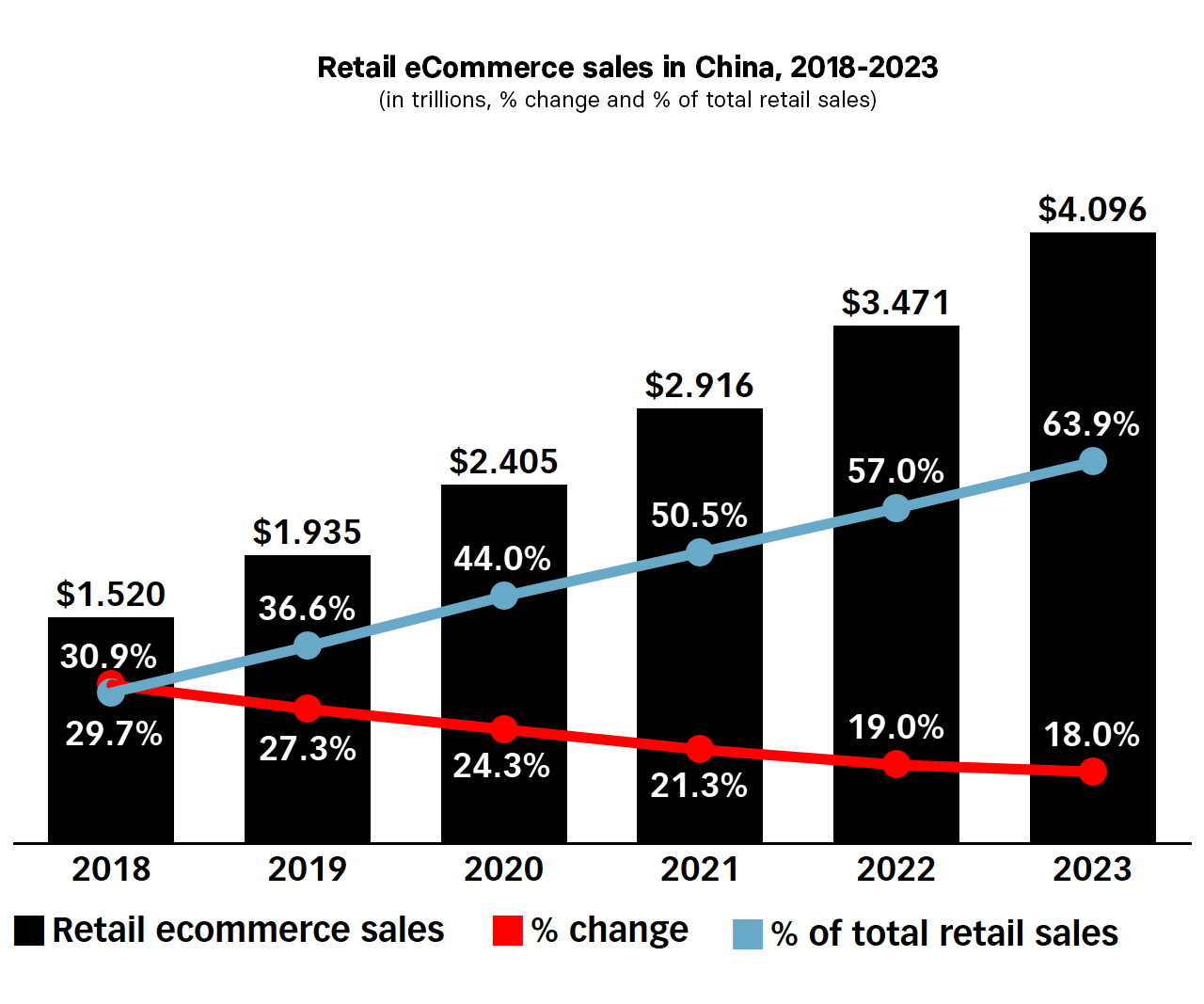
By 2021, mobile eCommerce sales are forecast to account for 54% of total eCommerce sales (source: BigCommerce), according to eMarketer. However, as Shana Pilewski, Head of Content at Dynamic Yield, stated that “only 12% of consumers find shopping on the mobile web convenient”. The poor user experience is considered one of the essential obstacles in driving sales on mobile, and the main reason for the so-called mobile gap, which is a term used to describe a disproportion between time spent on mobile and the volume of mobile sales.
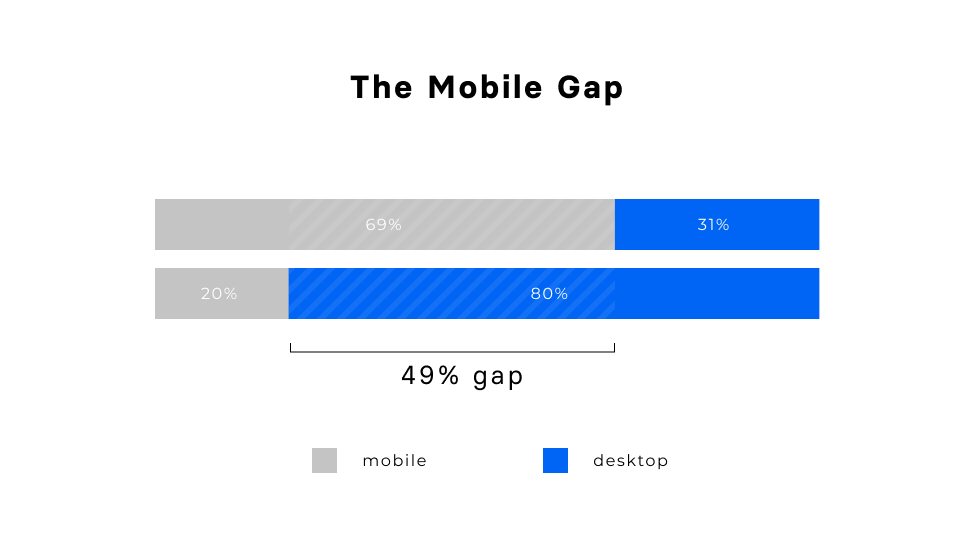
In the majority of markets, retail has a significantly higher audience reach among mobile users than desktop ones, but mobile sales numbers remain much lower.
A lack of mobile-friendly payment methods (though they are not the only obstacle) is one of the main reasons for the mobile conversion gap. Customers are 10% more likely to complete a purchase if a digital wallet payment option such as Apple Pay, Android Pay, Samsung Pay, or PayPal is available, according to Divante‘s internal research. Thanks to these kinds of mobile wallets, there is no need to use credit cards, and that is excellent news as checkouts asking for credit card payment generate an 80% abandonment rate.
“Users must have possibilities that are simple, safe, and secure. Apart from that, the whole process must be quick and painless.“
Agnieszka Janich, Product Designer at Divante
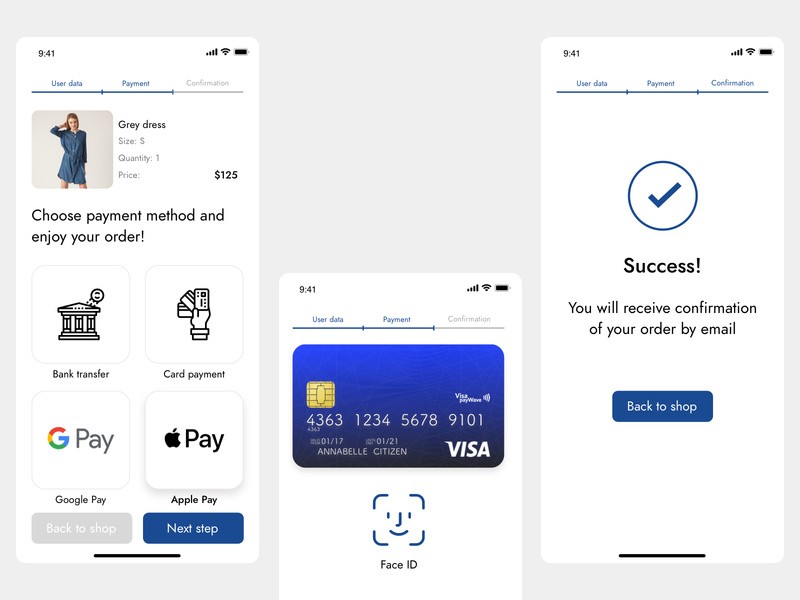
Different countries, different payment habits
Customers expect a seamless and fast buying journey. Since neither entering personal details into the form nor typing credit card details with one’s thumbs could be considered seamless, mobile payment apps are the answer to UX-rooted problems.
However, there are some additional criteria that retailers must deal with when choosing payment methods. First of all, there are local habits which have nothing to do with common sense. Like we said above, using credit cards seems to be contrary to the principle of smoothing the user’s path since there are solutions—like Google Pay, Apple Pay, or PayPal—which handle it better. However, shoppers in the US and UK generally still use card payments (or PayPal), and the most popular method in Germany, according to SaleCycle, is ELV, a kind of direct debit payment. Typically, in German-speaking countries, mobile payments are used less frequently than in, for example, Turkey.
We should, therefore, consider them an alternative to, not a replacement for, traditional ones, according to the PWC report. The traditional form of payments, like debit cards or credit cards, should be included in the eCommerce strategy. Ideally, e-stores should allow customers to save their information so that they might choose to check out more conveniently in the future, but it is too early to render traditional technology as obsolete when so many users are reluctant to adopt innovative alternatives.
Usage of Mobile Payments, according to the PWC report [%]
| Germany | 25 |
| Austria | 32 |
| Switzerland | 35 |
| Belgium | 47 |
| The Netherlands | 51 |
| Turkey | 65 |
Mobile wallets in eCommerce
Mobile wallets like Apple Pay, Google Pay, Samsung Pay, or Amazon Pay may differ in detail, but work on a similar basis, namely by securely storing the credit card details, shipping address, and other sensitive data. Shoppers need to enter the necessary information—from debit and credit cards, loyalty cards, or even coupons—just once. If they want to make an online purchase, they have to choose the app and select the right card or—if they shop in a brick and mortar store—bring the phone closer to a terminal. Depending on the particular provider and transaction amount, users might need to confirm a transaction with a PIN, password, pattern, FaceID, or Touch ID. Mobile wallets use a Near-Field Communication (NFC) chip—the same technology that enables contactless payments with physical cards. Samsung Pay additionally uses magnetic secure transmission (MST).
In the western “filter bubble”, the most known mobile wallets are Apple Pay and Google Pay (formerly Android Pay). Still, more than two-thirds of mobile wallet users live in Asia-Pacific, with China contributing close to 50%, according to Business Wire. The lion’s share of the market goes to Alipay and WeChat Pay, while other leading players in the region include Paytm, PhonePe, LINE Pay, Rakuten Pay, and GO-PAY. Alipay and WeChat Pay are based on QR codes. Thanks to this, they can work even on low-budget devices, which has had a significant impact on the dynamic growth of mobile payments’ in China.
In Europe, the adoption of mobile wallets differs depending on a particular country. Apple Pay and Google Pay are most commonly known in the region, as they are in the US where they also outpace the competition but remain behind traditional providers, banks, and card brands, according to Statista.
Although they still have an advantage, the traditional providers cannot sleep easy. In order to defend their position against digital newcomers American Express, Discover, Mastercard, and Visa announced their solution in October 2019. It is, as the founders claim, a faster, more secure online checkout based on the new EMV® Secure Remote Commerce (SRC) industry standard. It was created to “address an increasing need for consistent, simple user experience and stronger protection of payment information across all types of digital channels and cards.”
Mobile payments are safe, but concerns remain
Mobile wallets are actually safer to use than the psychical debit or credit cards, in which magnetic strips can be relatively easy read by scanners. In mobile wallets, every transaction is heavily encrypted. Additionally, they are better secured against unauthorized usage, since it is necessary to provide a personal identification format, such as a PIN, fingerprint, or face recognition.
However, sometimes the facts don’t matter in the face of common perception.
The concerns of customers are still the major obstacle to the growth of mobile payments. And the customers have plenty such concerns. They are afraid of hackers, device theft (surprisingly, the fear of having a traditional wallet containing cards, documents, and cash stolen is less overwhelming, according to PWC), and, last but not least, they have concerns about privacy. During the most widespread backlash against tech-giants from Silicon Valley, which has recently been treated as the main villain of the modern world, this lack of trust seems quite natural.
In the case of mobile wallets, and payment software in general, it is better to rely on large, recognized providers like Apple and Google. They don’t track what the user buys or where they buy; the device numbers are private, and so retailers don’t have access to them. These systems also keep all the information fully encrypted and the user doesn’t need to swipe or insert a card exposing himself to card skimmers.
Mobile wallets are a natural extension of the general mobile-first trend, and—even though the financial services industry is probably the most conservative—they are not innovative-proof. The change will come because the social need for them is growing.

Published February 20, 2020

